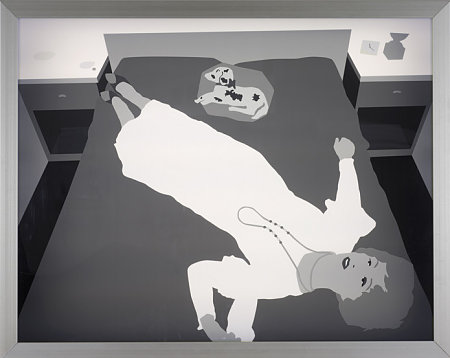
On the Horse
After a moment of silence, a kid in the last row, who often reeks of marijuana, leans back in his chair, crosses his arms and asks, “You’re not going to tell us they just made up that stupid horse, are you?"
*
Entering the Hiroshima Peace Memorial Museum armed with John Hersey’s account of the aftermath of the first atomic bomb drop does not provide you emotional fortification. You might think that it would, having already read how one Mr. Tanimoto attempted to rescue twenty people stranded on a sand spit in the river—that when he reached for a woman, “her skin slipped off in huge, glovelike pieces.” Though sickened by it, he managed, in three trips, to transport all twenty “slimy living bodies” across the river, consciously repeating to himself, “These are human beings. These are human beings. These are human beings.”
Or how, on a quest for potable water, Father Kleinsorge, a German priest, encountered about twenty soldiers. “Their faces were wholly burned, their eye sockets were hollow, [and] the fluid from their melted eyes had run down their cheeks.” The priest offered them water, but the “swollen, pus-covered wounds” that had once been mouths couldn’t “stretch enough to admit the spout of the teapot.” Father Kleinsorge fashioned a straw from wild grass and managed to slake their thirst. Like the thousands of other walking wounded listlessly wandering the devastated streets of Hiroshima, the soldiers needed doctors unlikely to come. The priest attempted to ease their fears. “There’s a doctor at the entrance to the park,” he said. “He’s busy now, but he’ll come soon and fix your eyes, I hope.”
Father Kleinsorge most certainly knew he offered only false appeasement. The soldiers’ eyes had become mere dirty tears drying on their cheeks.
Inside the museum there are even more gruesome, firsthand accounts of the days following the blast, as well as details of radiation sickness, photographs of the destruction, narrated views of the body-clogged estuaries, and old film footage of life in the city in the days leading up to August 6, 1945.
Hiroshima was part of the itinerary of a tour I took in 2003. Of all the displays in the museum, the ones that affected me most featured children, especially those represented in the collection of everyday items that had outlasted their owners: Miyoko’s wooden clog, found three months after the blast; Miraki Fujii’s blood-spattered emergency supply bag, containing medicine and diapers for her fifteen-month-old brother; Shigeru Orimen’s lunch box and water bottle; Itsuyoshi Kawamoto’s diary; Akira Sakanoue’s belt; Nobuko Shoda’s school uniform; Nobuko Oshita’s homemade slip; Yasuko Oshita’s school badge, round blue and centered with a white heart; Shinicki Tetsutani’s tricycle—the best friend, according to his father, of a boy not yet four on August 6th. Shinicki’s father buried this best friend with his son in the backyard. Forty years later, Mr. Tetsutani replanted his son’s remains in a family cemetery and donated the tricycle, now mangled and rusted, to the museum, so tourists like me could gawk at it until all the moisture leaves the backs of our throats.
I left the museum wanting to be alone, like I had after touring Auschwitz, the Museum of Genocide Victims in Vilnius, Lithuania, the Old Slave Mart Museum in Charleston, South Carolina, and pretty much every other place built, or rebuilt, to commemorate human-on-human violence. A small crowd of tourists, mostly silent, but some sniffling, lingered outside the exit. The sun seemed awfully bright and too warm, like it does after you leave a movie matinee in the dead of summer. Shielding my eyes, I slid away from the small crowd and walked over for one last view of the Atomic Bomb Dome. The exposed rib-work of the dome on top of the building is one of the most recognizable sites in Japan. Like the Kurfurstendamm in Berlin, the dome has been left in its ruined state to remind people of the city that once was. There I stood, at Ground Zero. Birds sang. Children smiled. Summer wafted from trees. All I could think about was the tricycle.
